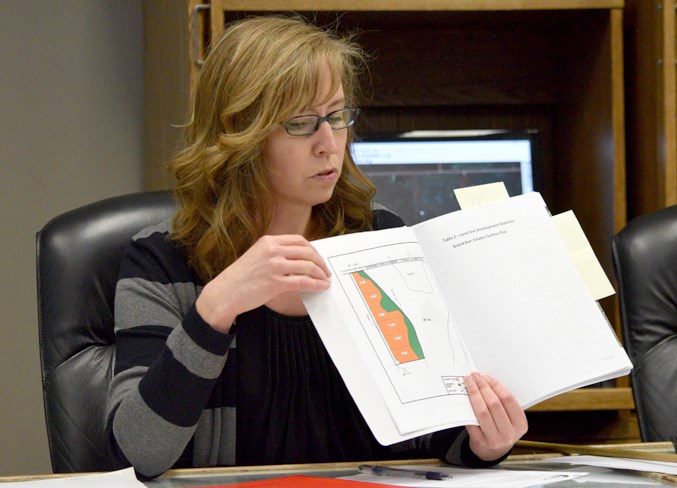Having a working smoke detector and fire escape plan that has two escape routes could be the key to saving your life.
That was the message Barrhead Regional Fire Services firefighters Craig Plitt and Matt Gallatin for Barrhead Elementary School students on Oct. 1.
The presentations were a part of the department’s Fire Prevention Week activities.
Fire Prevention Week was established in 1922 to commemorate the Great Chicago Fire, the tragic 1871 conflagration that killed more than 250 people, left 100,000 homeless, destroyed more than 17,400 structures and burned more than 2,000 acres.
The fire began on October 8, but did most of its damage on October 9, 1871.
Plitt said it doesn’t matter how old a person is, it is important that they are involved in the planning of what to do when there is a fire.
“You always want to make sure you that you know of at least two ways to get out of any room you are in, because if one of them is blocked by fire and smoke, you want to be able to have a way to safely get out,” Plitt said, asking the audience of Grade 2 students for examples.
The majority of students replied doors and windows depending on the situation. “You want to check to see if the door is hot first. [If it is hot], you shouldn’t open it because that means that there is fire behind it,” said one student.
Another student added that people need to stay as low as possible because of the smoke.
Plitt agreed, saying often it is the smoke that is hard to see and breathe.
“Smoke rises and the cleanest air will be close to the floor,” he said, adding whatever the method they leave — whether it be a door, window or otherwise — the most important thing is to get out of the building in the quickest and safest manner possible.
Once you are safely out the building, Plitt told the students they should immediately go to a predetermined spot agreed to by their family.
“You are not likely to be able to all escape using the same route or at the same time and it is important for everyone to know who got out safely so they can tell us who we need to look for,” he said, adding they should never go back into a burning building.
In addition to having an escape route, the other important message is to make sure they have working smoke and carbon monoxide detectors.
The National Fire Protection Association (NFPA) recommends that fire detectors be installed inside each bedroom, outside each sleeping area and on every level, of the home, including the basement.
On levels without bedrooms, alarms should be installed in the living room, den or family room or near the stairway to the upper level, or in both locations.
“To make sure they are working they need to be tested once a month,” Plitt said, noting it is important to make sure the batteries are replaced regularly at least every six months.
“What I like to do so that I don’t forget is to change them every time there is a time change, every fall and spring.”



